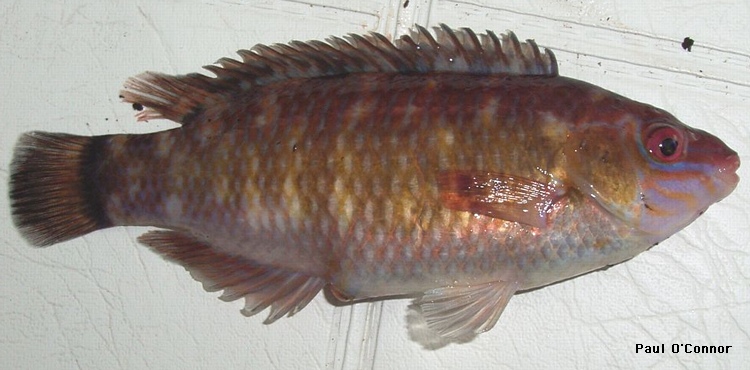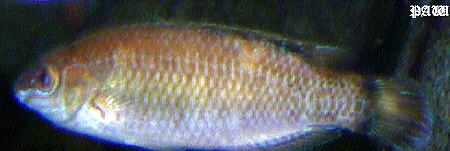Identification:
Small dumpy wrasse, with it's small head and deep set body. The
mouth is also small but highlighted by fleshy lips, and has a single row
of small conical teeth. Dorsal fin is long and is composed of two joined
sections. The first is composed of some 18 to 20 membrane bound spines, with
the second more lobate fin comprising of 5 to 7 branched rays. The anal fin
is approximately half the length of the first dorsal fin, and has 4 to 6
slender spines in it's anterior section, followed by 6 to 8 branched rays.The
scales of the head and body are relatively large and well defined, with 33
to 37 running the length of the lateral line.
Colouration is typically that of a greenish brown on the back with a dusting
of blue flecking, that fades towards the yellow / brown of the sides and
off-white of the belly region. Males exhibit blue stripes on the lower region
of the head, along with blue spotting / stippling on the margins of the dorsal
and anal fins.The tail has a distinct dark submarginal crescent band across
it, and bounded by two lighter regions, with the tail fringe sporting a blue
border.
Breeding:
Spawns during May and into June/July, in a
nest of fine algae in rock crevices. Age expectancy up to 8 years.
Habitat:
Favours shallow waters (2 to 25m), with weed beds or eel-grass, and over
rocky substrates, where it is most commonly encountered. Tends to be locally
distributed.
Food:
Eats a variety of crustaceans, such as amphipods and copepods, whilst also
acting as a cleaner fish, and removing ectoparasites from other fish.
Range:
Found all around the
U.K.
Additional Notes:
|

